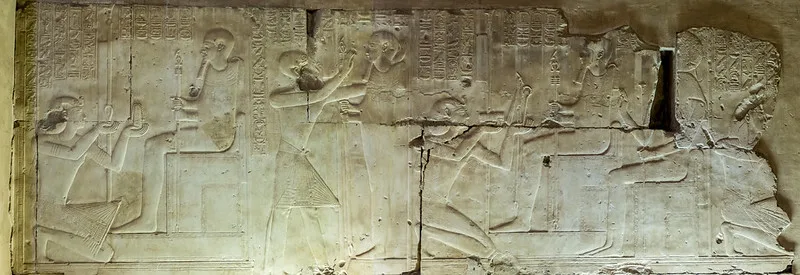Ptah creative power of life
Ptah creative power of life

Human prayer figure in the catacombs guardian of buildings that protect the temple of the supplicant The cult of Ptah spread until he became one of the four great gods of the empire protecting the temple of the god on the carved walls that developed in many forms The empire of Ramses was worshiped at Pi-Ramses In the coronation and rituals of Ptah and in the Ptolemaic dynasty continued to indicate the important role of the god Ptah Representative of the afterlife Osiris Representative of the afterlife and god of the underworld Under the gods united with Osiris represented Pharaoh Nefertiti named Ptah-Sokar-Osiris half man half falcon.

This same Ptah could also be associated with the sun god which became a new god The construction of the royal pyramids later gradually established a new god with Osiris who looked after and protected the deceased during their journey to the West and the afterlife From the ancient kingdom Pharaoh Nefertiti was found in a white shroud wearing a crown of Atef an attribute of Osiris a representative of the guardian god of the tomb of Saqqara and other famous sites Sokar wore a crown of Atef an attribute of Osiris as the guardian god of the tomb of Saqqara and the place where the Great Pyramid was built
In the late Egyptian period in the eastern Mediterranean through the spread by the Phoenicians we find images of Ptah in Carthage an ancient city in North Africa Located on the eastern shore of Lake Tunis he was often associated with the god Bes and was widely worshipped throughout Egypt Ptah took on various forms from a mix of all the ancient gods of Memphis Ptah was also represented as a deity of two birds with human heads adorned with a solar disk on a sacred boat As a spirit god Ra similar to the twin gods Shu and Tefnut he was associated with the Seven Pillars of Memphis
Nefertari making an offering of linen to Ptah (detail)
(Nefertari making an offering of linen to Ptah, detail from the west wall of the Eastern Annexe of the Tomb of Nefertari
Temple of Gerf Hussein, originally known as Per Ptah, is a temple dedicated to Ramesses II.
The same Ptah could also be associated with the sun god under the name of the god Ba as Ptah is recorded as giving life to the gods and gods through the heart and tongue Human prayers figures in the tombs guardians of structures protecting the temples of supplicants The cult of Ptah spread until he became one of the four great gods of the empire protecting the temples of the gods on the carved walls that developed in many forms In the Rameses Empire he was worshipped at Pi-Ramses In the coronation ceremonies and rituals of Ptah and in the Ptolemaic dynasty there were still continuations indicating the important role of the god Ptah








